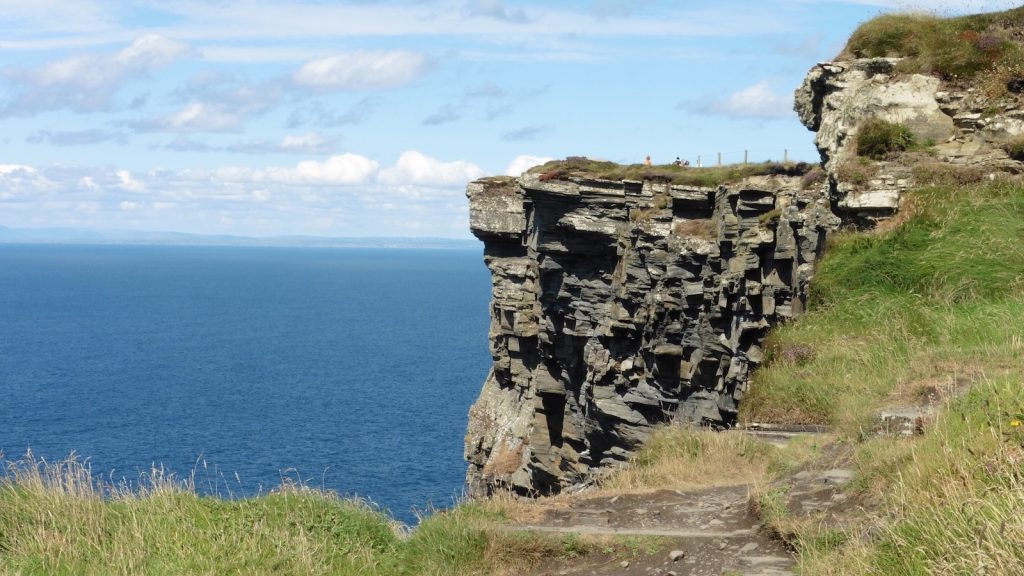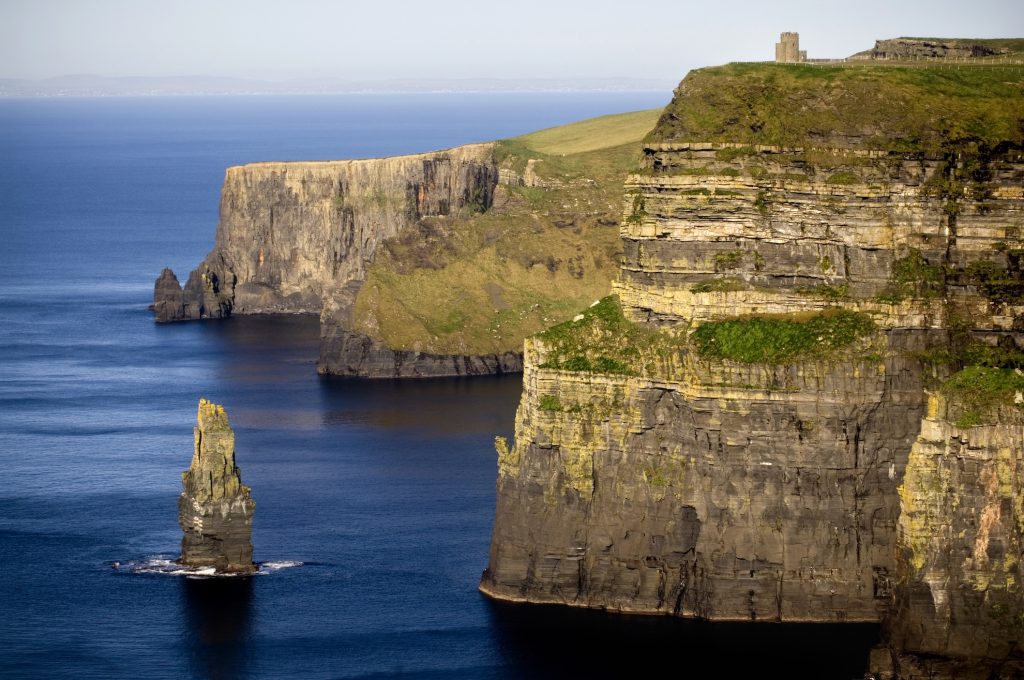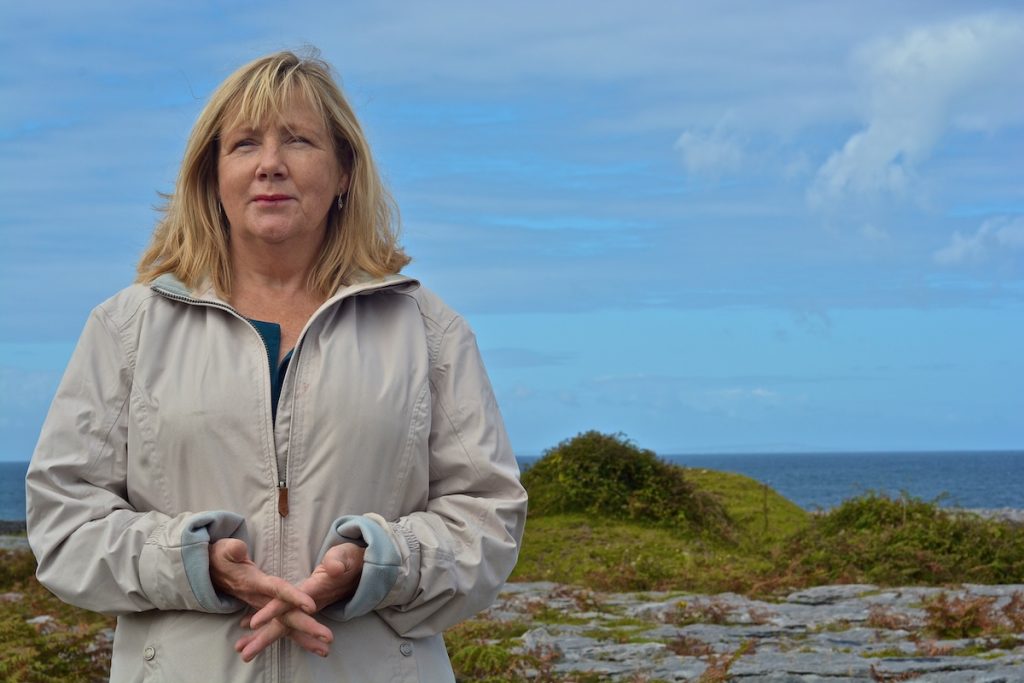Embrace the Heart of Ireland and the Wild Atlantic Way
In all your travels, few experiences will move you like standing at the top of the incredible Cliffs of Moher as the waves of the mighty Atlantic crash and curl 214 metres below.

Where You’ll Go
On this tour you’ll head for the famous Cliffs of Moher where you’ll safely take in unmatched sweeping views of Galway Bay and the Aran Islands. Continuing your journey, you’ll travel inland to North Clare’s incredible Burren where you’ll explore the dramatic, lunar-like landscape that dates back 340 million years. As we explore, you’ll understand why for generations, the Burren has inspired poets and artists alike.
Perfect for Families and Groups
Whether you’re on a family getaway or enjoying the company of friends – this tour will enrich your time spent in our corner of the world. Entertaining, educational and exhilarating, there’s something for everyone.

What You’ll Experience
Running for 14 kilometres and towering over West Clare’s rugged coastline, these iconic sea cliffs are a Signature Discovery Point on Ireland’s Wild Atlantic Way. Here natural history holds hands with over 20 species of birds, a wealth of fauna and flora and some of the best walks and hiking in Ireland.
Taking its name from the Irish word “Boíreann” which means a ‘rocky place’ – the Burren is a vast 12000-year-old cracked pavement of glacial-era limestone rich with caves, rock formations, fossils and architectural sites. In this place of immense quiet beauty, you’ll come face to face with Ireland’s geological past, see rare and beautiful Arctic-alpine wildflowers and herbs and a host of birds and animals.
You’ll visit this fascinating Neolithic portal tomb – a testament to the region and its ancient inhabitants.
Discover remnants of early Irish settlements.
Share insights into Ireland’s poignant history and the history that’s built into Clare’s unique dry-stone walls.
Visit the resting places of scholars, poets, and ordinary local folk.
Witness the unique karst landscape and fossil formations.
Customize your tour with locations of personal interest.

Why This Tour is Different
As with all our tours, this option gifts you so much more than beautiful sight-seeing – it is a deep immersion into the colourful historical and cultural heritage of the Burren. We give you an authentic Burren experience – sharing our vast local knowledge and passion for this place, taking you to hidden spots and recounting stories old and new.
What You’ll Learn
Kathleen is our knowledgeable onboard Certified National Tour Guide who’ll share her knowledge of the area’s history, folklore and ecology. From local mythology to the Burren ancient farming method of ‘winterage’, you’ll learn so much and enjoy every moment. As you go Kathleen will unlock many hidden secrets – guaranteeing your family or group a memorable and enriching journey through one of Ireland’s most captivating regions.

Your Tour Details
Duration
Choose between a half-day or full-day tour to suit your schedule.
Time
Tours commence at 10 am.
Meeting Point
Into the Burren, Fanore, Co Clare OR from your local hotel.
Alternative meeting point by arrangement.
Transportation
Kathleen will accompany you in your vehicle. Alternatively, we can arrange a minibus or other transportation upon request.
Group Size
Ideal for small groups seeking a personalised experience.
As a further unique feature, Into the Burren charges per guide rather than per person on your tour.
Enhance Your Experience
Photography Opportunities
Capture the stunning vistas and unique features of the landscape. This tour is perfect for those with a passion for photography.
Customized Itinerary
From history to geology and nature, we can tailor the tour to your special interest.
Your Day at a Glance
Full Day
9:00 am – We’ll meet you at Fanore or collect you from your accommodation.
Morning – We’ll visit the incredible Cliffs of Moher for a true show-stopping experience. You’ll enjoy a cliff top walk, wildlife spotting and some of the most breathtaking views in Ireland.
Midday – We’ll recommend a few of our favourite, local eateries and stop for lunch.
Afternoon – We’ll explore the Burren’s lunar landscape rich with rocky wonders, fascinating Neolithic sites and beautiful and unique flora.
4:45 pm – We return and drop you at your accommodation.
Half Day
9:00 am – We’ll meet you at Fanore or collect you from your accommodation.
9:30 am – We’ll take a short visit to the beautiful Cliffs of Moher that tower over the Atlantic with pride. You can enjoy a cliff walk, experience the wildlife, hear about how the Cliffs were formed and capture the dramatic views.
11:30 am – We’ll explore the Burren rocky limestone beauty while stopping to examine the fascinating Neolithic sites and the unique flowers that grow there.
12:45 pm – We return to your accommodation OR we’ll recommend our favourite local eateries for lunch.
Booking Information
Rates
Full Day: €330 per group
Half Day: €270 per group
Pricing is per group of up to 6 people. We can accommodate larger groups upon request.
Guests staying at Into The Burren receive a 10% discount
What’s Included?
Expert guidance by our Certified Tour Guide Kathleen, throughout.
Personalised itinerary planning.
Tour information, advice, maps, binoculars, and more.
What’s Not Included?
Entrance fees, meals and optional activities such as boat trips.
Good To Know
Tours operate year-round, weather permitting.
To secure the tour date of your choice we recommend making an advance booking.
What TO Bring
Whether you’re taking a full-day Burren and Cliffs of Moher Tour or you choose a half-day adventure, make sure you come prepped and prepared:
Dress for All Seasons
The Irish weather is nothing if not surprising and coastal weather can change in a heartbeat! So, to make sure you stay dry, comfortable and ready for the elements – bring a waterproof jacket with a hood, wear layered clothing you can take off and on and of course good, comfortable walking shoes or hiking boots. We’ll be on uneven ground so good grip is a must.
Handy to Have
Bring a small backpack packed with spare layers of clothing, some snacks or a light lunch, and a water bottle which is essential if you’re following one of the longer walking routes. Bring a hat and gloves because it gets breezy up on The Burren, and sunscreen and sunglasses because the sun can make an entrance at any time!
Bonus Bits
For an all-round fabulous experience make sure you have your camera or smartphone ready to snap some awesome views. If you’re into flora, history, geography or geology we also recommend you bring a notebook so you can make some notes if you want, while a guidebook is also useful.
Come prepared and we’ll take it from there! From stunning landscapes and majestic cliff views to hidden Burren secrets and local history – there’s so much to see and experience. We’re looking forward to showing you around!






